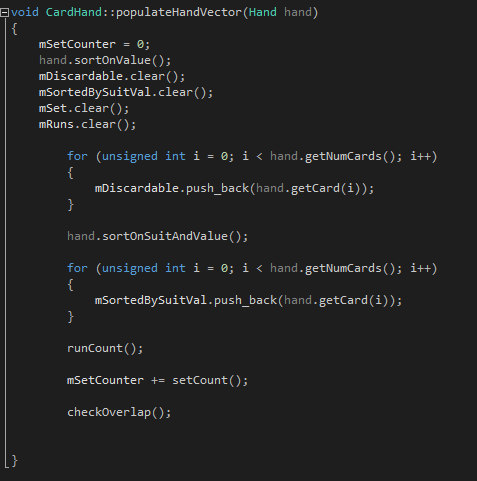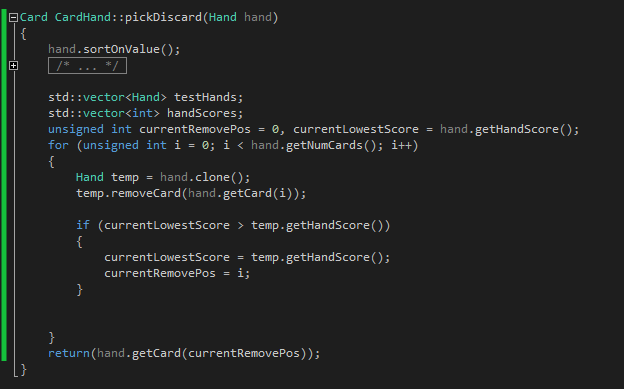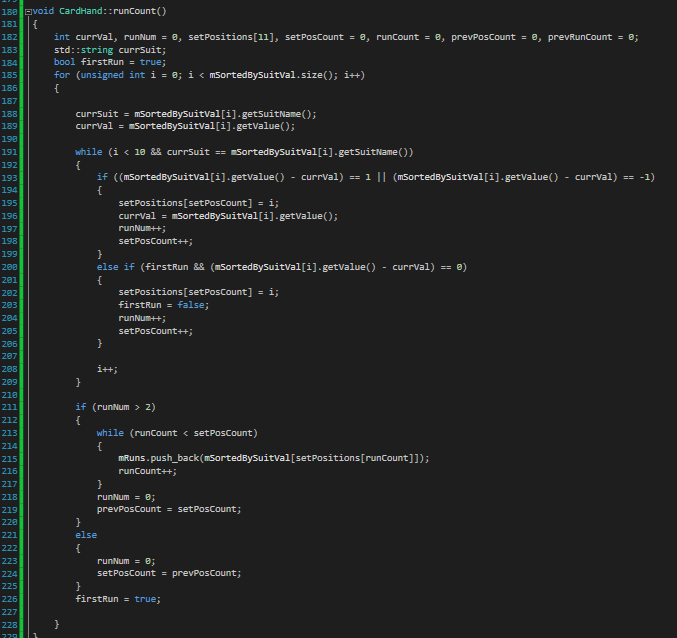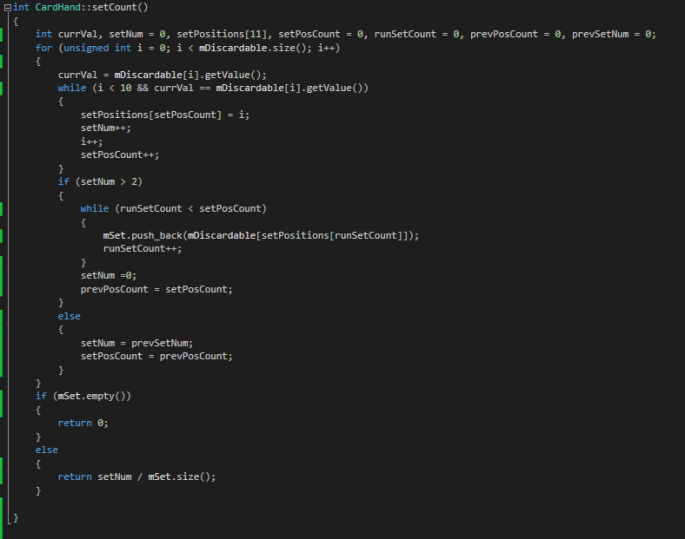Gin rummy was an interesting project. The original plan was extremely complicated and would be difficult to be made. After working on it for a while I realized that I made it over complicated. Upon this realization I found it could be simplified to checking scores. All that I really needed to do was discard the card that will leave you with the best score. The draw step would be based off if the discard would lower the overall score or not. Assuming it did you would draw it and then there was a fail safe to ensure you wouldn’t discard the card again.
Going from complicated to simple I realized how easy it is to overplan. It isn’t easy to be fully aware of everything you need before you start working, or even that you don’t need all you planned. I’m glad I discovered a simpler way, even if it didn’t change a lot of the code we were given. Before I found it I spent a lot of time making things to control the set up of the game, which my discovery made virtually pointless. It was still a good experience to have. After this assignment I realized it will be better to think of the simplest solutions first. It will be hard, but that will be a skill worth developing.
There isn’t much to say overall about the process. Compared to minesweeper the general idea flowed easier for me and it makes the next project seem exciting. As of now it is clear I have to be prepared for anything when it comes to an AI. The next project can only improve things as we move forward in this class.






